
© Frank Atura. (Click image for larger version)
Sarasota Ballet
Monotones I & II, Symphony of Sorrows, There Where She Loved
★★✰✰✰
New York, Joyce Theater
14 August 2018
www.sarasotaballet.org
www.joyce.org
It says quite a lot about a regional troupe when they can rally the cabal of New York City balletomanes around them, and Sarasota Ballet is just such a troupe. Although of modest size (currently they count seven principals not including guest artist Marcelo Gomes), the company has garnered high acclaim for their accomplished dancing but also their repertoire, most notably their attention to works by Sir Frederick Ashton. For 11 years, Artistic Director Iain Webb, a former dancer with Sadler’s Wells Royal Ballet, has consistently kept Ashton in Sarasota’s billing, providing much-needed exposure of the great British choreographer on U.S. shores. While ABT, SFB, and Joffrey have Ashton in their repertoire, seeing Ashton is a more rarified experience here than it should be, even in New York.
Webb dedicated these performances of Monotones I & II to the late historians Clive Barnes and David Vaughan, noting his wishes for continued appreciation of Ashton today and tomorrow, for dancers and spectators alike. After viewing Ashton on a bill with works by Ricardo Graziano and Christopher Wheeldon, I’m not worried about Ashton’s relevance nor his resonance with a future audience. Like a wind-up watch, Ashton will still “work” because his nuts and bolts are in proportion, in the right place and when wound will still tick away nicely. I am worried if troupes don’t perform him consistently enough, they will lose the ability to dance Ashton well from a technical perspective, his elegant ease often belying tricky steps and phrasing.
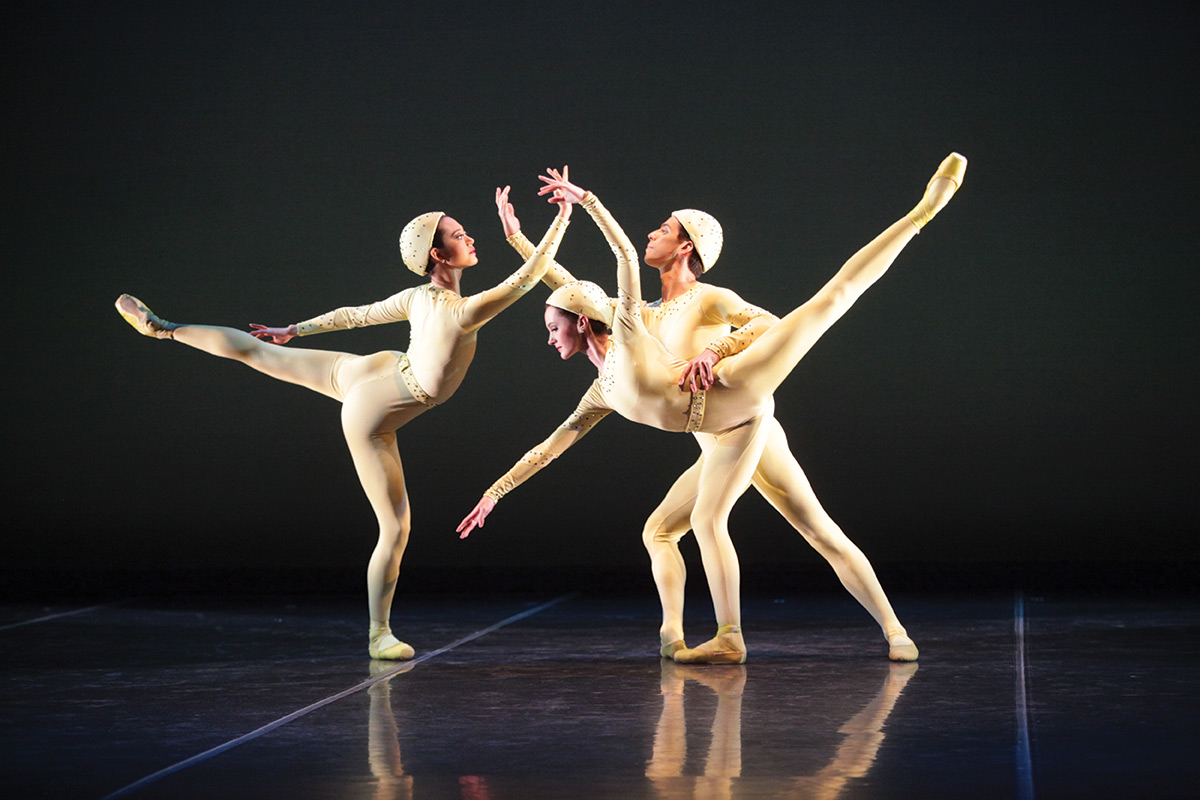
© Frank Atura. (Click image for larger version)
Monotones I & II (1965-1966) felt by far the most current, the most contemporary work in the program, despite being the oldest of the three. Cool, collected, pure, musical and set to equally distilled works of Satie – Trois Gnossiennes and Trois Gymnopédies (originally using an orchestration by John Lanchbery, here performed live by pianist Cameron Grant). Ashton created it after having seen Merce Cunningham’s company in London, although notes of Nijinska and Balanchine are also present.
The dark background sets off the three figures in monochrome ensembles (pale lemon in I, white in II): unitards with bedazzled skull caps and belts, whose subtle glinting hint at the heavens. Monotones I & II is a reverential celebration of geometry’s celestial qualities. Monotones II is the more memorable of the two, opening with a woman (Victoria Hulland on Tuesday night) in the splits on the ground, her torso pitched over her leg, who is then lifted by two men, her position changing not a jot, straight up to a vertiginous pointe. She maintains her pose, nose to knee, hand holding her heel, and is turned around with care by her partners Ricardo Graziano and Ricardo Rhodes. Although many extreme positions are taken, Hulland’s body plied and presented in various positions, everything is pretty, not an aggressive gymnastic statement nor insipid. This is balanced out by the men dancing with her, or alongside her. The three bodies alternate between doing the same steps, partnering Hulland, and dashes of asymmetry – a male solo here, while she is partnered there. In a quiet, ingenious moment, Hulland takes an attitude arabesque promenade. Her arms are partnered by one man while the other follows her arabesque leg (going under her partnered arms) and unfolds with a soft flourish, her arabesque leg fully straightening as he unfolds his arm to connect-the-bodies, as if to illustrate the geometry of ballet is in fact, infinite. Ashton’s mastery of classical form and musicality is such that Monotones II looks like these celestial bodies have been traversing the orbit to Satie since the dawn of time. They just exist, pure and simple.

© Frank Atura. (Click image for larger version)
Both Symphony of Sorrows and There Where She Loved were tougher sells. They were not helped by the fact that Ashton came first, and neither choreographers were going to match that (excessively long intermissions between them didn’t help). Moodwise both were dark: Symphony of Sorrows is self-explanatory on that front (taking its name from its music, the alternate title to composer Gorecki’s Symphony No. 3) and Wheeldon’s was set to Chopin and the ever-lighthearted Kurt Weill. Both posed some problems from what some might consider a “female” perspective.
Symphony of Sorrows consists of plentiful pas de deux, most of them belaboured. The most memorable and disturbing was one in which a woman forcibly fends off a pushy partner, coitus positions are assumed, then for reasons unbeknownst to us, she seeks out her abuser, and clings to him. Siobhan Burke called attention to aspects of these types of conflicts in an article in the NY Times last year, which in turn had additional discourse among dancers, critics, and viewers on Instagram. Sorrows was an example of a technically plotless ballet with a dangerous subtext that permeated more than this singular pas de deux. What was happening onstage was clear, a “no” from a female, which could be said to have been interpreted as a “yes” by the man. What was not clear was why it was there (as far as I can tell, Gorecki’s lyrics don’t reflect anything I saw onstage), or why the outcome so frequently is a woman draped devotedly on a man’s body – often in the fetal position, connoting the same powerlessness and dependency as that of a fledgling child in the womb.

© Frank Atura. (Click image for larger version)
Wheeldon is not opposed to the fetal position either, and it appears regularly in There Where She Loved. Sopranos Michelle Giglio and Stella Zambalis, in particular gave powerful renditions of Weill’s pining and sour lovelorn lyrics, but the dancing wasn’t as good as their potent vocals. Although lyrics have a hand in this narrative (no translations are offered here either), it feels tired and trite, with many women posed, stretched around and carried by men in various conventional poses. For my ballet-meets-Weill, I’ll take Helgi Tomasson’s 1993 work Nanna’s Lied any day: although at times difficult to watch (it does not end well), there is a purpose to the action, the narrative fairly clear.
Sarasota boasts some fine male dancers, and it is a shame they’re used to their best advantage in Ashton, which only features four of them. Wheeldon is capable of decent choreography for men, but you won’t see it here. There are some brief, explosive moments of powerful, Ailey-esque movement in Symphony, but it is all too brief, focusing more on the spread-legged contortions of the female dancers whose faces are covered up at the end, either by the male dancers or in a combined effort, the woman complicit with the man. Even though they are eventually unveiled, it is a demeaning gesture, and its thoughtless inclusion stings in a moment when women continue to fight to be seen, heard and treated as equals. We can and should ask more of dance in the 21st century.












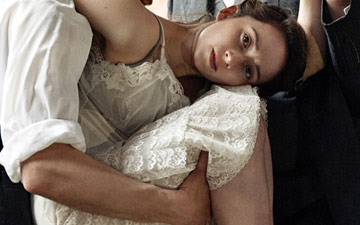
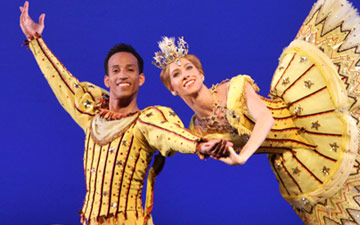
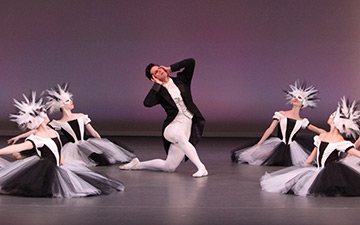

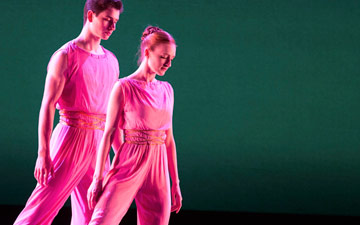
You must be logged in to post a comment.